The most important Indian path in America was located east of the Appalachian Mountains in Pennsylvania and extended southward to eastern Georgia. During the year of 1646, Abraham Wood led an exploring party over the Occonneechee Traders’ Path along the upper James River in Virginia. He was seeking the truth about a great high mountain located 5 days away towards the west. Wood did not find the huge mountain, but years later, during 1671, he sent Thomas Batte and three other men to find the waters on the other side of the mountain and discover the South Sea. Batte journeyed to the waters of the Mississippi River. Others would follow Wood’s instinct and explore the area west of the James River. The Indians knew the mountainous terrain well and marked their trail through the narrow passages and valleys. Many legends proclaim that the Indians would watch the eagles soar in the skies and noticed their descent and heights. This enabled them to locate natural passageways through the terrain.

During the year of 1680, the empire of the Iroquois extended west from Chesapeake Bay through Kentucky to the Ohio and Mississippi rivers. It also extended northward to Ontario, Canada. A vast amount of territory that dominated the Great Warriors’ Path in western Virginia and the Carolinas.
By 1716, Great Britain was firmly placed in North America. Twelve colonies were established and English ships were arriving with new immigrants and transporting tobacco and other materials to England. All of these early settlements were located along the eastern seashore with the exception of Pennsylvania. The Appalachian Mountains was the end of colonial settlement during this time period. A verbal treaty was organized by Alexander Spotswood allowing the settlers to use the path and not fear the Indians by way of ambush attacks and more. But, this treaty was met with great frustration from the Catawba Indians of South Carolina and the Cherokee scattered throughout North Carolina. The actions of these tribes would halt the migration to these areas for nearly thirty years.

The actual trail was a footpath that measured a foot to 18 inches in width. The terrain was filled with tall trees such as pines, chestnut, oak and maple. Mountain laurel and wild flowers would nestle in between striving to reach the available sunlight. Wild game would abundantly thrive in this wilderness and the Indians used the path as a hunting trail. They would mark trees with symbols for directions. At times, the trees themselves would become a symbol. Some of these still survive today. The path would also be used to trade with other Indian nations and to proclaim war against them. During the early years, small communities could be located with “long houses” for family members. Hunting parties would stay in these smaller villages prior to returning to their own homes.

For the most part, Indian hunting parties would travel behind one another in a line along the path. This technique was used widely to allow all eyes to focus on the path and the surroundings at all times. Thick forests inhabited the region and warriors had to be on the lookout for bear, buffalo, panthers and poisonous snakes such as rattlesnakes and copperheads. An extensive study performed by Paul Wallace in Pennsylvania produced the discovery of over 130 separate Indian trails. These routes began in Delaware and ended in upper Virginia and southern Maryland.

Below contains a small listing of family surnames who lived along The Great Warriors Path during the 16th, 17th and 18th centuries.
John Anderson, 1715-1794, m. Jean S, VA; son Andrew m. Martha Crawford
Henry Bagwell, 1589-1662, m. Alice Stratton Chilcott, VA; son Thomas m. Anne Stockley
Johann Michael Braun, 1732-1807, m. Margareta C. Shamback, VA; dau. Christina m. John Echols
Johannes Cassel, 1639-1691, m. Mary X., PA; son Arnold m. Susanna de La Plaine
Chilab Hale, 1740/1-1820, m. Lydia X, VA; son Daniel m. Mary Park
John Kemper, 1692-1758, m. Alice Elizabeth K. Utterbacks, VA; son Harman m. Catherine Kuntz
William Luckett I, 1711-1782, m. Charity Middleton, MD; son William II m. Sarah Nelson
John Michael Miller, 1692-1771, m. Susan Agnes Berchol, PA; dau. Barbara m. John H. Garber
Arthur Moseley, 1699-1735, m. Martha Coche, VA; son John m. Elizabeth Williamson
Isaac Pipkin, c1727-1814, m. X., NC; dau. Elizabeth m. Henry Lee
William Randolph, Pp1650-1711, m. Mary Isham, VA; son Thomas m. Judith Fleming
Joseph Strickler, 1731-1795, m. X. Stickley, VA; son Abraham m. Christina Brubaker
Anna Maria Hoffman Traberin, bf 1672-af 1748, m. Johann Niclaus Treber, NY; son Sebastian m. Christina Uhl
Thomas Well, 1590-1659/60, m. Alice Tomes, CT; dau. Sarah m. John Chester
Nicholas Wyatt, c. 1647-1720, m. Frances Edgbrough, VA; dau. Suzanne m. Benjamin Ricks

The above photo was taken near Kingsport, Tennessee along the original portion of the Great Warriors’ Path. The tree is located in front of a cave which collasped many years ago. The land was once declared sacred land by the Cherokee and is adjacent to Childress Ferry location. These tree markers can still be found along the original trail from Pennsylvania and down through the southeast.
This article is part of our Great Wagon Road Project and the information here is just a small sampling of early history for The Great Warrior’s Path. The name of the route would eventually change to the Great Wagon Road and it became the most traveled route in the colonies. If you would like to join our project and preserve the Great Wagon Road for future generations, let us know by contacting Piedmont Trails. As always Piedmont Trails appreciates your support and kind words. May your quest for genealogy and history be filled with many treasures.
ENJOY YOUR JOURNEY !!

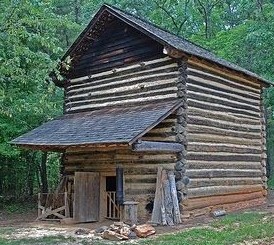
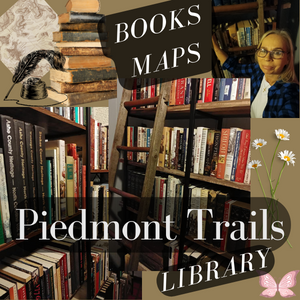

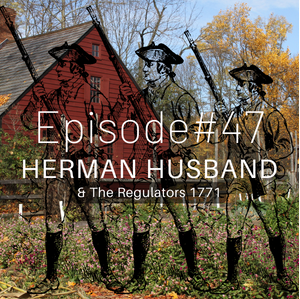
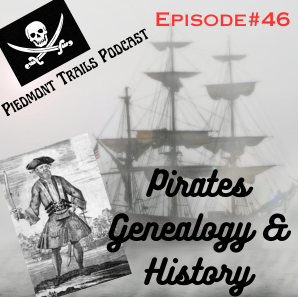
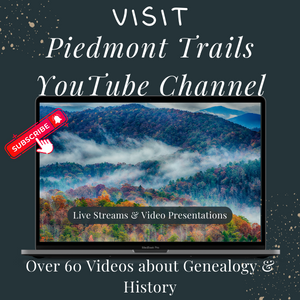


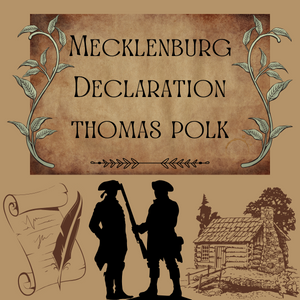
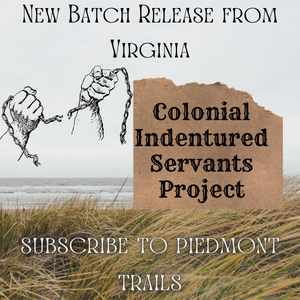

My ancestor, Pierre Prevot, also settled in the abandoned Indian village identified in “The Great Warriors Path” as Manican Town. He arrived there on the Peter and Anthony in 1700 from France. He married, lived and died there, but his descendants immigrated further south to New Bern, North Carolina.
LikeLiked by 1 person
Thank You so much Annie for sharing your family history with us. Many first English settlers and others who first settled along the Great Warriors’ Path migrated further into the southeastern sections of the United States.
LikeLike